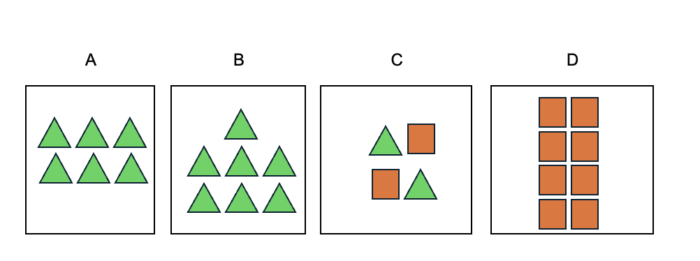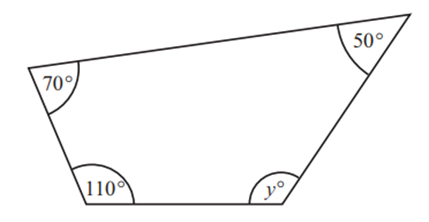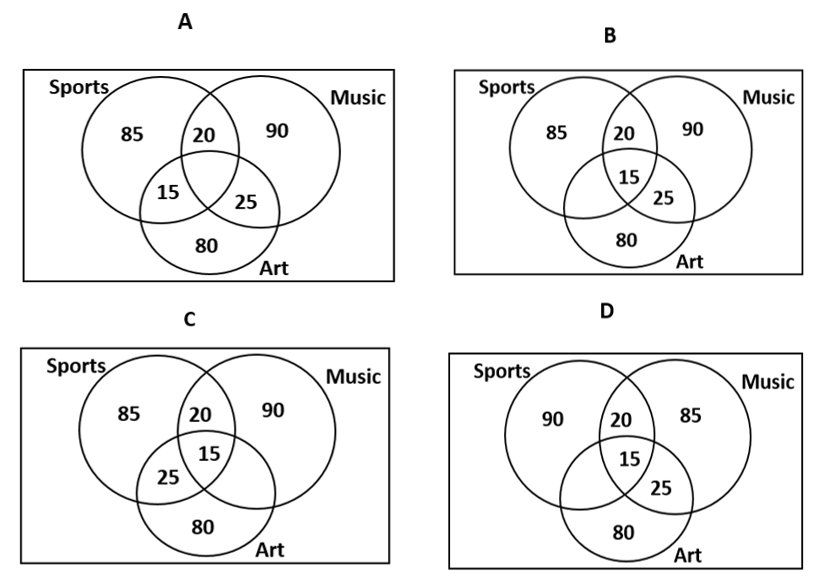The NWEA MAP Math Test is a vital assessment designed to evaluate your child’s academic progress and performance in mathematics.
In this comprehensive guide, we’ll cover everything you need to know about the NWEA MAP Math Test. From understanding its format and scoring to practical preparation strategies, we’ve got you covered.
You’ll also find sample questions, tips for studying effectively, and advice on using results to enhance learning at home.
Looking to help your child excel on the MAP Math Test? Dive in for practical advice and expert resources to set them up for success!

Hey there! Do you have a question about the test or our practice package? Email me at roman@staggingapps.website. I'm here to help your child succeed!
The Math section of the MAP test is designed to align with your child’s skill level, providing a tailored evaluation of their mathematical abilities.
Understanding its structure is key to effective preparation and easing your child’s concerns.
This math assessment generally includes 43 questions per session for Kindergarten and 1st Grade, and 53 questions for 2nd Grade and above.
Because the test adapts to your child’s responses, it does not have a set time limit. While most students complete it in 45 to 60 minutes, your child can take the time they need, as it is untimed.
The test content matches your child’s grade level but adjusts to include skills slightly above or below it. Here’s an overview of the topics by grade range:
This adaptive approach ensures the test challenges students appropriately based on their abilities.
The assessment uses various question types to engage students and evaluate a broad range of math skills:
These varied formats measure not only basic arithmetic but also advanced problem-solving and critical thinking skills, reflecting real-world math applications.
By understanding this assessment’s structure, you can guide your child toward better preparation, helping them approach the test with confidence and readiness.
Practicing with sample math questions is a highly effective way to prepare your child for this adaptive test. These questions help in several ways:
Below, you’ll find sample questions taken from our MAP Practice Packages, designed for students from Kindergarten to 9th Grade, providing targeted preparation for the math assessment.
Look at the graph below. How many students chose chocolate ice cream as their favorite taste?

A. 6
B. 3
C. 5
D. 4
The answer is 42.
Look for the pattern in the first series of numbers. We get from 29 to 10 by subtracting 9 first, then dividing by 2. The pattern is [(-9)÷2] because 29 – 9 = 20 ÷ 2 = 10.
Likewise, we get from 41 to 16 by using the same pattern (rule) [(-9)÷2]. Indeed, 41 – 9 = 32 ÷ 2 = 16.
The next series of numbers should follow the same pattern, meaning that the rule between 93 and ? should be [(-9)÷2] as well: 93 – 9 = 84 ÷ 2 = 42, meaning that the correct answer will be 42.
? = 42.
Try more practice questions for the MAP Kindergarten test with your child on our dedicated page!
In a classroom, students create a pattern using shapes. The pattern consists of triangles and squares.
If this pattern continues, what will be the next set of shapes?


Correct Answer: B
By observing the sequence, we identify the shapes and their counts:
The sequence alternates between triangles and squares.
The count of triangles increases by 1 each time they appear:
1 triangle → 3 triangles → 5 triangles
The count of squares also increases by 1 each time they appear:
2 squares → 4 squares → 6 squares
After the last entry, which is 6 squares, the next shape in the sequence will be triangles since the pattern alternates. The last number of triangles was 5, so the next number of triangles will be 7.
Thus, following the established pattern, the next set of shapes will be 7 triangles.
Try more practice questions for the MAP 3rd Grade test on our dedicated page!
Use the table below to answer the question.
Item | Price of each | Price of six |
Marker | $2.75 | $15.00 |
Pen | $1.25 | $6.50 |
Glue stick | $0.6 | $3.00 |
Ruler | $1.80 | $9.50 |
Scissors | $4.50 | $24.00 |
Notebook | $5.00 | $28.00 |
What is the cheapest cost of ten glue sticks?
A. $5.40
B. $6.20
C. $6.60
D. $7.00
E. $7.20
The correct answer is A.
To find the cheapest cost of ten glue sticks, we need to consider the prices for both single units and bundles of six from the table:
Bundle Price: Six glue sticks cost $3.00.
Single Unit Price: One glue stick costs $0.60.
To buy ten glue sticks, we can:
Purchase one bundle of six glue sticks for $3.00.
Purchase four additional glue sticks at $0.60 each.
Cost for four single glue sticks: $0.60 × 4 = $2.40
Total Cost = $3.00 + $2.40 = $5.40
Hence, the correct answer is option A.
Try more practice questions for the MAP 4th Grade test on our dedicated page!
Find the value of y.

A. 360°
B. 120°
C. 90°
D. 130°
E. 100°
The answer is D.
The sum of all the angles in any quadrilateral is 360°. To solve for the value of y we must add the given interior angles and then subtract it to 360°.
Let us solve it.
100°+70°+50°+y°=360°
230°+y°=360°
230°-230°+y°=360°-230°
y°=130°
See more sample questions for the MAP 6th Grade test on our dedicated page!
At Greenfield Middle School, 200 students were surveyed about their favorite extracurricular activities. The following data was collected:
Which Venn diagram correctly represents this data?

The correct answer is B.
Sports (S): 85 students enjoy Sports. Shown in a circle top left.
Music (M): 90 students enjoy Music. Shown in circle top right.
Art (A): 80 students enjoy Art. Shown in a circle at the bottom.
Sports & Music (S ∩ M): 20 students enjoy both Sports and Music. Shown in the overlap region between sports and music.
Music & Art (M ∩ A): 25 students enjoy both Music and Art. Shown in the overlap region between art and music.
Sports & Art (S ∩ A): No students enjoy both Sports and Art. Shown empty in the overlap region between sports and art.
15 students enjoy all three activities: This means there is no overlap in the region where all three circles intersect.
Hence, the answer is option B.
The math section evaluates a range of skills, tailored to your child’s grade level and ability. Its adaptive design adjusts question difficulty based on performance, providing a personalized assessment. Key areas include:
This assessment tracks your child’s progress in these areas, highlighting strengths and pinpointing where additional practice may be beneficial.
The MAP Math assessment is a critical tool schools use to identify students for advanced or gifted programs. Its detailed results highlight students who consistently perform above grade level, qualifying them for more challenging academic opportunities.
Schools analyze RIT scores to evaluate math proficiency. Students scoring significantly above grade-level expectations, especially those well above average, are often considered for advanced placement. The test measures not only grade-level competency but also a student’s ability to grasp more complex mathematical concepts.
There is no single cutoff score, but students in the 90th percentile or higher are typically flagged for advanced programs. Schools may also compare RIT scores with local and national benchmarks to determine eligibility for gifted placement.
If your child’s scores indicate readiness for advanced learning, consider these steps:
Understanding your child’s MAP Math results can help you advocate for their academic growth and ensure they access opportunities that match their potential.

The MAP Math assessment can be a valuable resource for homeschoolers, offering detailed insights into your child’s strengths and areas needing improvement. With its RIT scores, you can design a personalized learning plan that aligns with your child’s current skill level.
RIT scores break down your child’s performance into specific math topics, such as number sense or algebra. Use these scores to identify areas needing the most attention.
Each RIT score range corresponds to specific skills. For example:
By targeting skills that align with your child’s ability level, you can ensure steady and meaningful progress.
To explore how MAP testing can fit into your homeschooling plan, check out our detailed guide on NWEA for Homeschooling. It includes tips for administering the test, interpreting results, and using the data to enhance your child’s learning experience.
Getting your child ready for the MAP Math assessment doesn’t have to be overwhelming. With a structured approach and the right resources, you can help build their skills and confidence.
Dedicate 15–20 minutes each day to focused math practice. Begin with areas where your child needs improvement, gradually moving to more advanced topics. Make practice engaging by incorporating math into everyday activities like cooking, grocery shopping, or playing math-related games.
Practice tests from platforms like Khan Academy or IXL can help your child get comfortable with the test format and question types. These resources provide grade-specific questions aligned with the skills assessed in the test.
Incorporate short, varied practice sessions into your child’s daily schedule. Rotate question types to maintain interest and ensure comprehensive preparation. Schedule practice tests periodically to simulate the test environment and track progress.
With consistent effort and the right tools, your child can approach the MAP Math assessment with confidence and readiness.
The MAP Math assessment uses RIT scores (Rasch unIT) to evaluate your child’s math proficiency. Unlike traditional grades, RIT scores provide a consistent, grade-independent scale that tracks academic growth over time.
A “good” score varies by grade level and school expectations. Generally:
For a deeper understanding of MAP scores and how to interpret them, explore our NWEA Scores article, featuring tools to help you track and analyze your child’s progress.
Calculator use during the MAP Math assessment depends on the grade level and the type of questions being answered. Here’s what you need to know:
Students do not need to bring a calculator, as the test automatically provides one when allowed. This ensures that calculators are used only when aligned with the test’s goals.

Sharpening your child's skills with lifelike practice for gifted tests and school exams.
© 2025 GiftedReady | HTML Sitemap